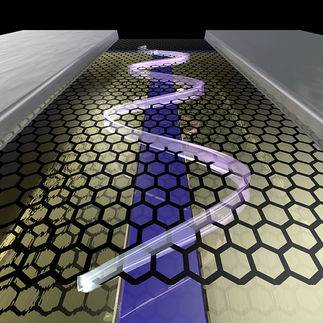Graphene Forms Basis for World’s Smallest Accelerometer
Advertisement
In what could be a breakthrough for body sensor and navigation technologies, a team of scientists in Sweden and Germany has developed the smallest accelerometer ever reported. They exploit the unique mechanical and conducting properties of the material graphene for this.
Each passing day, nanotechnology and graphene research are making new progress. The latest step forward is a tiny graphene-based accelerometer created by an international research team involving KTH Royal Institute of Technology in Stockholm, Sweden and researchers from the Aachen Graphene and 2D Materials Center – a consortium between RWTH Aachen University and AMO GmbH.
Microelectromechanical systems – MEMS for short, have formed the basis for new innovations in sensor and medical technology for decades. Now, these systems are moving to the next level: nano-electromechanical systems, or NEMS. Thanks to its extraordinary mechanical strength, atomic-thickness, and excellent conducting properties, graphene is one of the most promising materials for a breathtaking array of applications in nano-electromechanical systems.
Promising Future
The future for such small accelerometers is promising, says Xuge Fan, a researcher in the Department for Micro and Nanosystems at KTH Stockholm, who compares advances in nanotechnology to the evolution of smaller and smaller computers. “This could eventually benefit mobile phones for navigation, mobile games, and pedometers, as well as monitoring systems for heart disease and motion-capture wearables that can monitor even the slightest movements of the human body,” he says. “In addition, these NEMS transducers can be used as a system to characterize the mechanical and electromechanical properties of graphene itself.”
Max Lemme, professor at RWTH and Managing Director at AMO GmbH, is excited about the results: "Our collaboration with KTH over the years has already shown the potential of graphene membranes for pressure and Hall sensors and microphones. Now we have added accelerometers to the mix. This makes me hopeful to see the material on the market in some years. To this end, we are working on industry-compatible manufacturing and integration techniques.
This type of research is a good example of the activities pursued at the Aachen Graphene and 2D Material Center, Lemme says. "What is very characteristic of research on graphene and two-dimensional materials is the close feedback-loop between basic and applied research. We try to turn into real-life applications properties that have only recently been discovered, and this makes it for me all the more exciting.”

































































